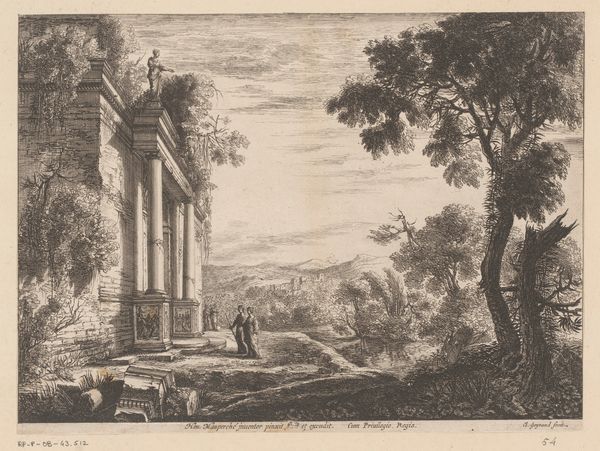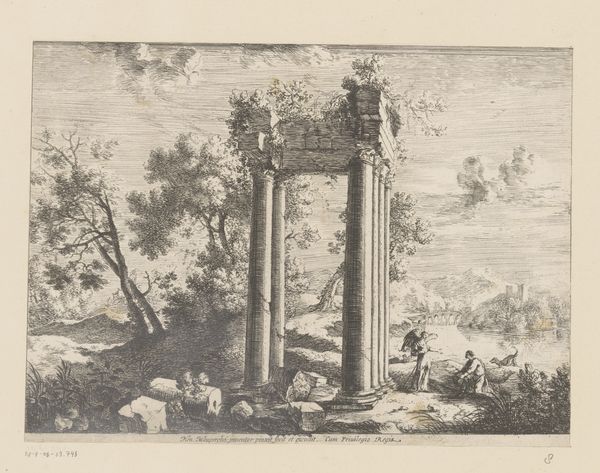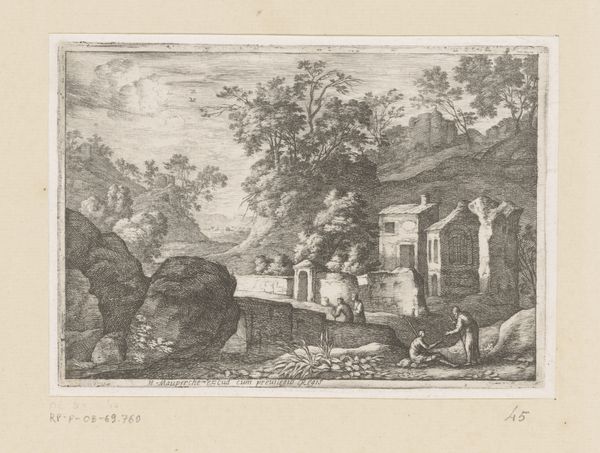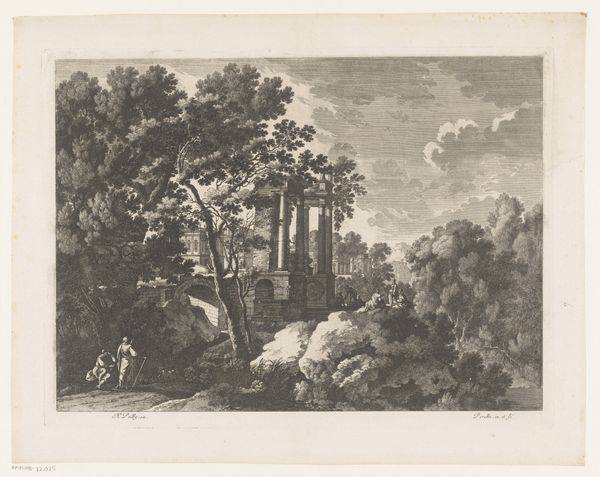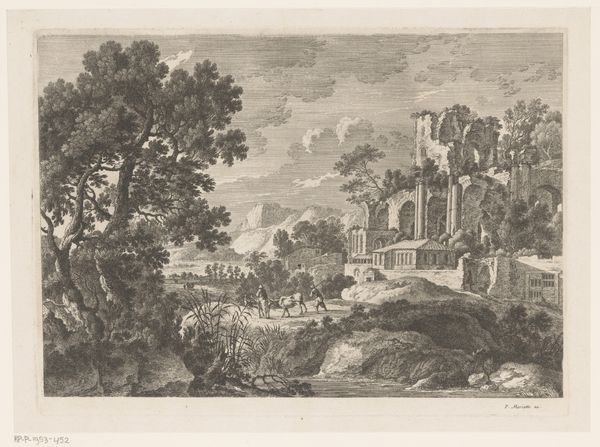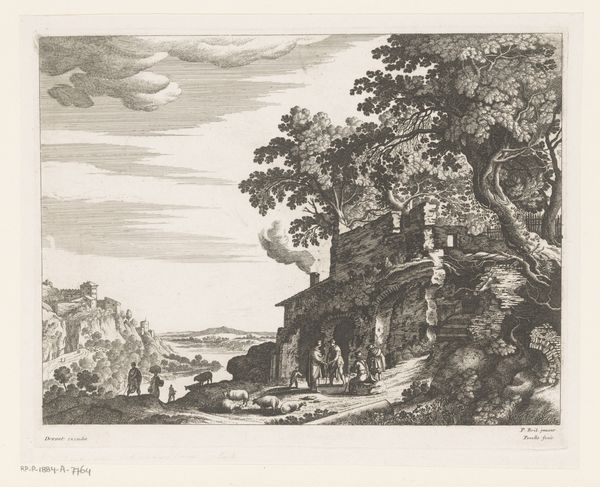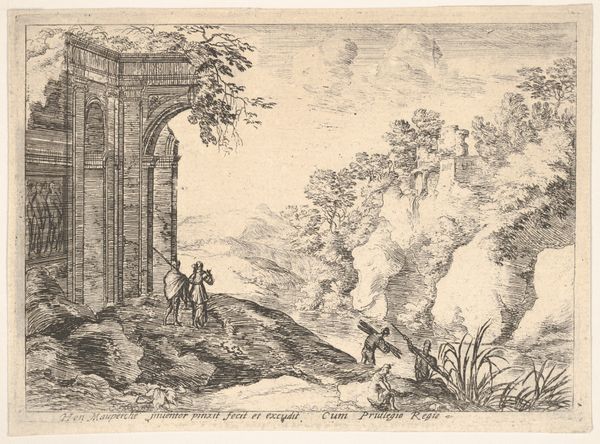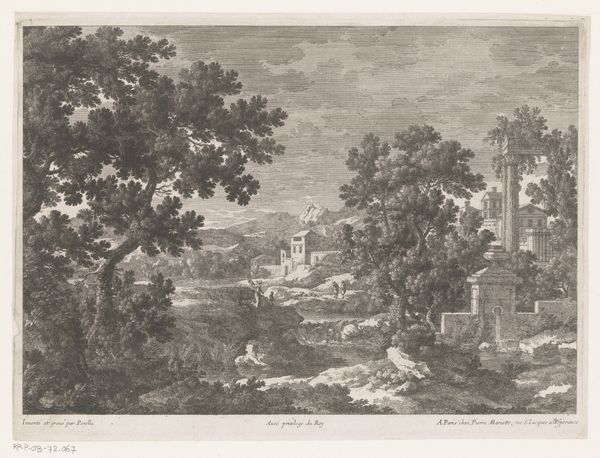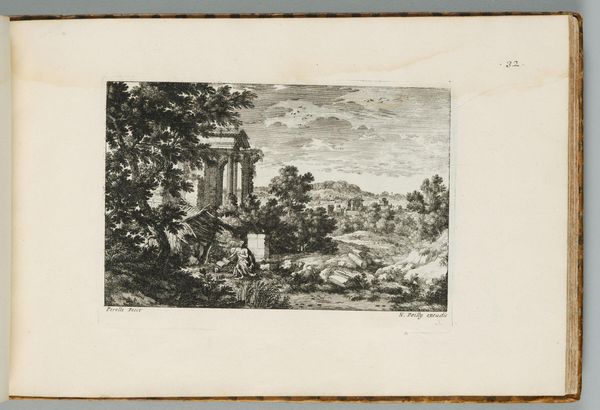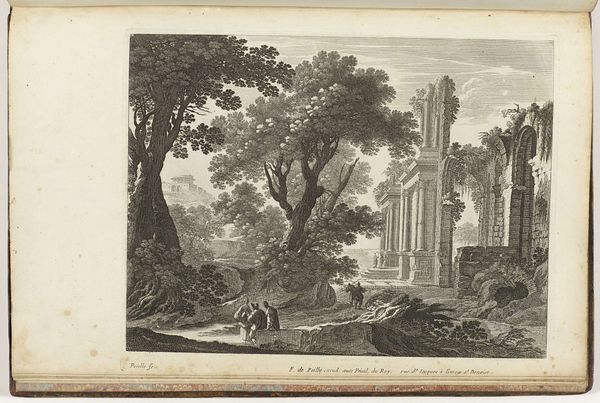
etching
#
baroque
#
etching
#
landscape
#
classical-realism
#
etching
#
form
#
line
#
history-painting
Dimensions: height 112 mm, width 169 mm
Copyright: Rijks Museum: Open Domain
Curator: Here we have Adam Perelle's "Landscape with Four Columns," likely created sometime between 1648 and 1695. It's an etching, currently residing here at the Rijksmuseum. Editor: My first thought is the tension between the precise architectural rendering of the ruins and the almost wild, untamed growth around them. It creates such an interesting visual paradox. Curator: Absolutely, that contrast is central. Perelle was working within a tradition of depicting ruins as picturesque reminders of past glories. Think about the political implications - empires rise and fall, but nature endures. There's often a veiled commentary on power in these kinds of scenes. Editor: It also speaks to the very labor involved. Consider the process: The meticulous tooling of the copper plate, the bite of the acid, versus the unpredictable way these columns would have decayed, piece by piece over centuries. And that paper it’s printed on, linen rags pulped down…everything from elite artistic practice to domestic textile recycling informs what we’re seeing. Curator: Indeed. And look at the figures included in the landscape. They aren't the powerful rulers or celebrated heroes one might expect. Instead, we see ordinary people going about their lives, almost dwarfed by the scale of the ruins. It's a subtle democratic gesture, inserting the common person into this historical narrative. Editor: Though, were these ruins not recorded in etching and disseminated as prints, they may well have disappeared, quarried for stone and repurposed into contemporary buildings. We're encountering here a preserved history precisely because of the intervention of art. How many other histories and labor practices vanished altogether? Curator: That's a powerful point, forcing us to question what narratives get preserved, by whom, and for what purpose. It’s important to consider Perelle's intentions within that broader context of power dynamics and cultural preservation. Editor: Ultimately, though, it comes back to the materials. The stark black lines on the pale paper, the very substance of the image constantly reminding us of the tangible reality it emerged from. Curator: For me, the enduring appeal lies in how it encapsulates the passage of time and our relationship with it, presented in this carefully crafted image. Editor: Yes, and it asks us to think about our place in that flow of making and unmaking.
Comments
No comments
Be the first to comment and join the conversation on the ultimate creative platform.
